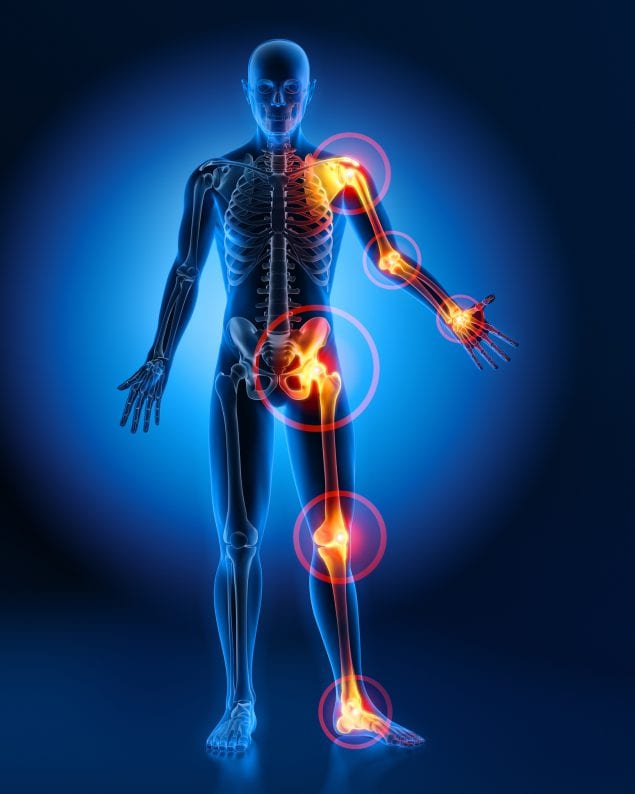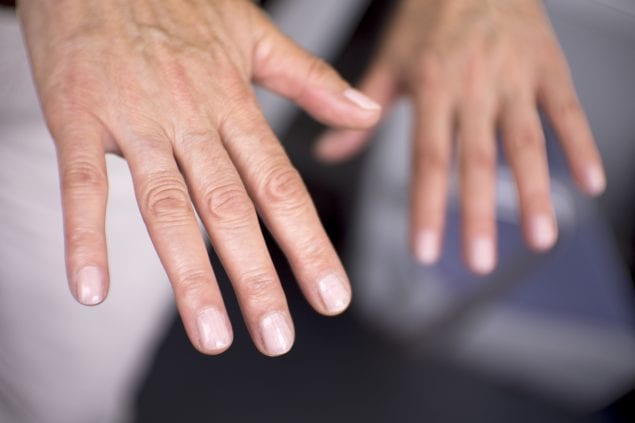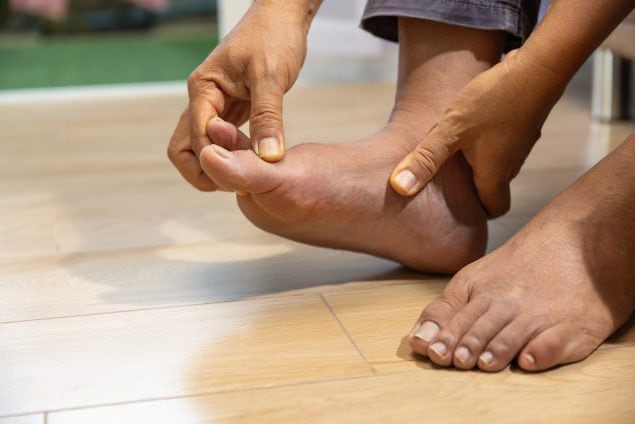Rheumatic Diseases and Pain
Nearly 1 in 3 US adults with doctor-diagnosed arthritis, a common type of rheumatic disease, have severe joint pain. Learn more about rheumatic diseases and how to manage pain-related symptoms with CDC resources.

Rheumatic disease refers to arthritis and several other conditions that affect the joints, tendons, muscle, ligaments, bones, and muscles.
How rheumatic disease causes severe pain
Rheumatic disease is an umbrella term that refers to arthritis and several other conditions that affect the joints, tendons, muscle, ligaments, bones, and muscles (arthritis refers to disorders that mainly affect the joints). Rheumatic diseases, like osteoarthritis, can lead to severe joint pain from the breakdown of cartilage, the firm but soft tissue that protects a joint, when not managed well.
The most common rheumatic diseases include osteoarthritis, the most common form of arthritis, and rheumatoid arthritis—sometimes referred to as RA. Rheumatoid arthritis is a condition in which the immune system attacks healthy cells. It can cause inflammation, swelling, and pain in several joints at once. Other common rheumatic disease include:
- Fibromyalgia: a rheumatic disorder that affects 4 million people and causes pain all over the body (also referred to as widespread pain), sleep problems, fatigue, and often emotional and mental distress.
- Gout: a form of arthritis in which urate crystals build up in a joint, usually the large joint of the big toe.
- Childhood/juvenile arthritis: arthritis in children; the most common form is juvenile rheumatoid arthritis.
- Lupus: a chronic autoimmune disease that occurs when the body’s immune system attacks the tissues and organs, causing damage to any part of the body.
Risk factors for rheumatic diseases depend on the specific disease. You can read more about rheumatic diseases and arthritis risk factors on the Arthritis Risk Factors web page. Inflammation of joints and other ligaments can cause long-lasting or chronic pain and lack of balance. CDC recognizes programs and has resources for adults living with arthritis and rheumatic diseases to improve their quality of life and relieve related symptoms.
How to ease pain related to arthritis and rheumatic diseases
Nearly 1 in 3 US adults with doctor-diagnosed arthritis (which includes gout, fibromyalgia, lupus, rheumatoid arthritis, and osteoarthritis) have severe joint pain, according to a recent CDC study. That means about 19 million US adults report pain so severe that it can limit their daily activities. An earlier CDC study found some groups are more affected by severe joint pain than other groups, including Black and Latino adults and those in fair to poor health, with serious psychological distress, who are unable to work, or with diabetes or heart disease.
People can help manage pain and stiffness from arthritis in a few ways:
- Get physically active! Studies show that physical activity can help ease joint pain and stiffness, and improve function, mood, and quality of life for adults with arthritis. Strength training is also recommended. You can do low-impact physical activity, like swimming, walking, and biking, to reduce joint pain.
- Check out CDC-recognized physical activity programs to help adults get or stay active and manage arthritis and other chronic conditions. Many of these programs are now offered remotely.
- Join one of the CDC-recognized self-management education classes that are proven to improve the quality of life of adults with arthritis.

The most common rheumatic diseases include osteoarthritis and rheumatoid arthritis (RA). Both cause inflammation, swelling, and pain in joints.

Gout is a form of arthritis in which urate crystals accumulate in a joint, usually the large joint of the big toe.
- State-Specific Prevalence of Inactivity, Self-Rated Health Status, and Severe Joint Pain Among Adults With Arthritis — United States, 2019 (cdc.gov)
- Rheumatoid Arthritis (RA) | Arthritis | CDC
- Arthritis Types | CDC
- Arthritis Risk Factors | CDC
- Prevalence of Severe Joint Pain Among Adults with Doctor-Diagnosed Arthritis — United States, 2002–2014 | MMWR (cdc.gov)
- Lifestyle Management Programs for Arthritis | CDC
- Patient / Caregiver (rheumatology.org)